Explore all 15 SDG Pavilions built in Copenhagen for the UIA Congress
A repurposed glasshouse, a red raft and a huge green washing machine are among the pavilions installed around the Danish capital for the UIA World Congress of Architects. Here's a look at all 15.
The SDG Pavilions are experimental architecture projects exploring themes relating to the UN's Sustainable Development Goals, a list of actions for global peace and prosperity.
They include a mix of pop-up installations, temporary structures and permanent additions to the Copenhagen cityscape, with some due to be moved to new, long-term locations in the coming weeks.
Some of the designs explore radical materials and construction techniques, while others are intended to provoke a rethink about current building practices.
Many of the SDG pavilions also hosted events as part of the programme for the UIA World Congress of Architects, which took place in Copenhagen from 2 to 6 July and for which Dezeen was a media partner.
With the theme Sustainable Futures – Leave No One Behind, it brought together architects and built environment professionals from around the world to explore how the industry can help shape a more sustainable future for the planet.
Read on for a guide to all 15 SDG Pavilions exhibited:
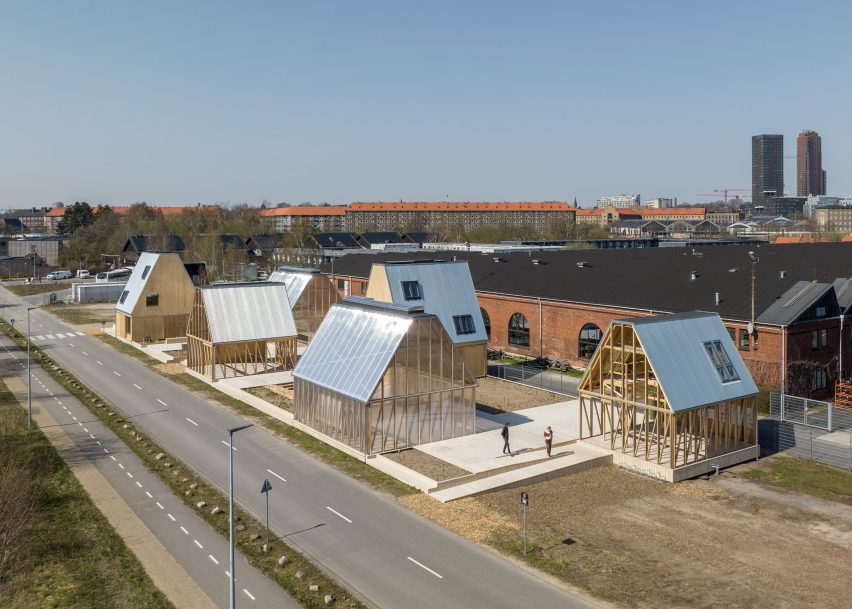
Living Places Copenhagen
Architect: EFFEKT
Design partners: Velux, Artelia
Location: Otto Busses Vej 27
The largest of all the pavilion projects, this is a series of full-scale prototypes for how homes could be constructed with a carbon footprint three times lower than is stipulated by Danish building regulations.
Built on a former railyard site, these seven timber structures – two houses and five open pavilions – target a CO2 footprint of 3.8 kilogrammes of CO2 per square metre per year, which the project team says is lower than other buildings in Denmark.
EFFEKT designed the structures to be cost-efficient, so they can be built for the same price as a typical house, and to feature materials and fittings that offer well-being benefits.
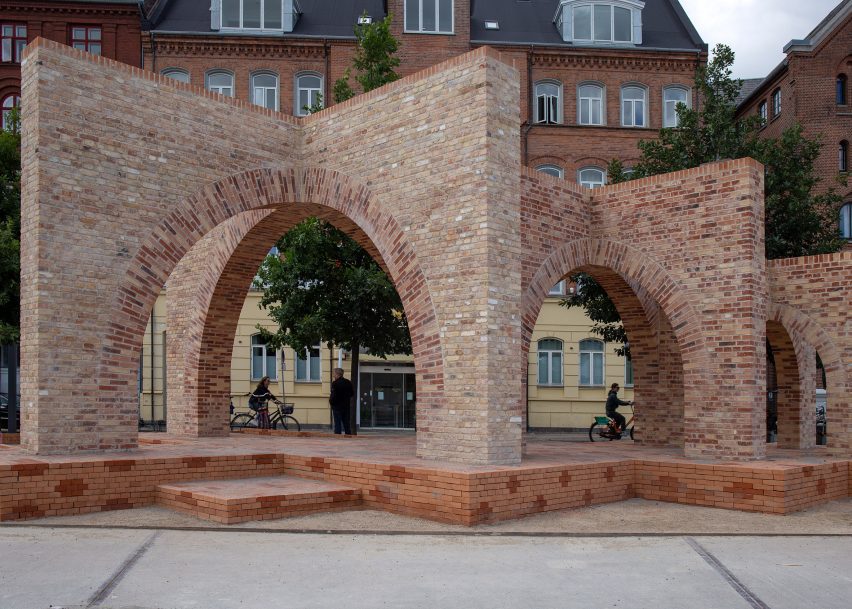
Bricks in Common
Architects: AART, Mangor & Nagel, NOAA
Design partners: OJ Consulting Engineers, Copenhagen Mason's Guild, NEXT Kbh
Location: Havnegade 37
Bricks are the key focus of this pavilion made up of three intersecting arches.
The design aims to highlight how this traditional Danish building material has a long lifespan while being highly energy intensive to produce, meaning it is only sustainable if used in the right way.
Each arch in the installation is a different size, but has the same CO2 footprint. This was achieved by using different types of brick – the first uses traditional bricks, the second features the most eco-friendly brick on the market, and the third showcases recycled bricks.
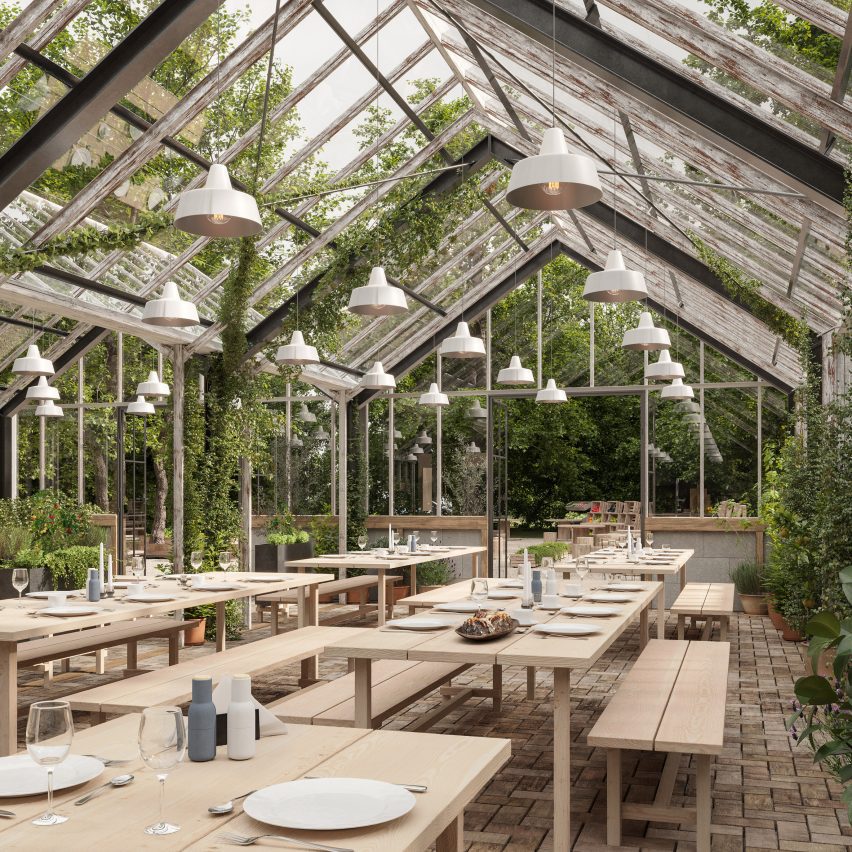
The Greenhouse
Architects: Forma
Design partners: BaneGaarden, Re:Arc Institute
Location: Otto Busses Vej 45
Instigated by entrepreneur and activist Søren Ejlersen, this project sees a century-old glasshouse from Copenhagen Botanical Gardens rescued from the brink of demolition.
Under guidance from Copenhagen architecture studio Forma, the structure was painstakingly taken apart and reassembled over a new substructure and floor, all created using recycled materials.
Filled with plants as well as furniture, the greenhouse will provide a long-term community events and education space for the climate-conscious BaneGaarden.
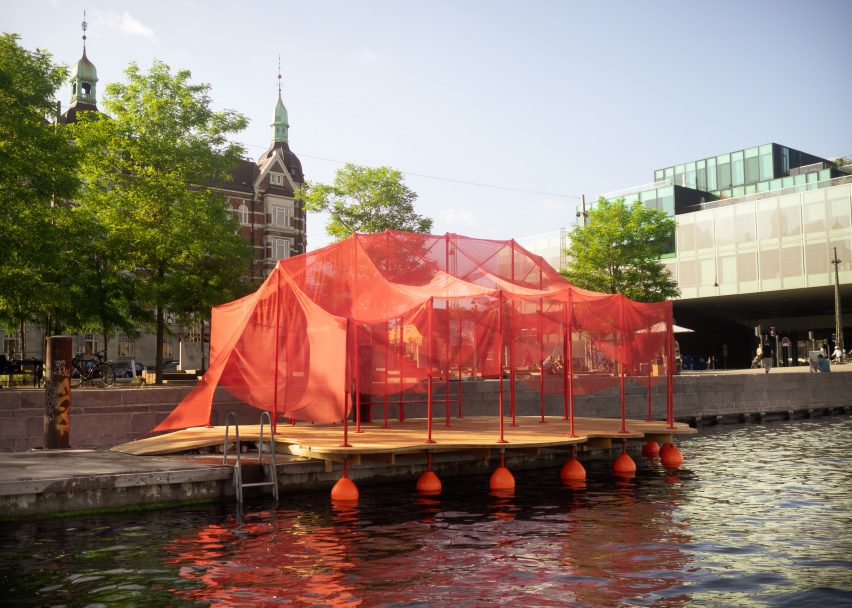
The Raft
Architects: Studio Coquille, Tan & Blixenkrone
Design partners: Kvadrat, CLT Denmark
Location: Christians Brygge 28
Red is the colour of this SDG Pavilion, which addresses issues around land availability, accessibility and underwater biodiversity.
Even though the structure extends out into the canal, it is designed by emerging studios Studio Coquille and Tan & Blixenkrone to be equally accessible and welcoming to those with limited mobility.
Combining a CLT platform with a roof made from reusable Kvadrat textiles, The Raft invites visitors to come and observe the ecology within Copenhagen's waters.
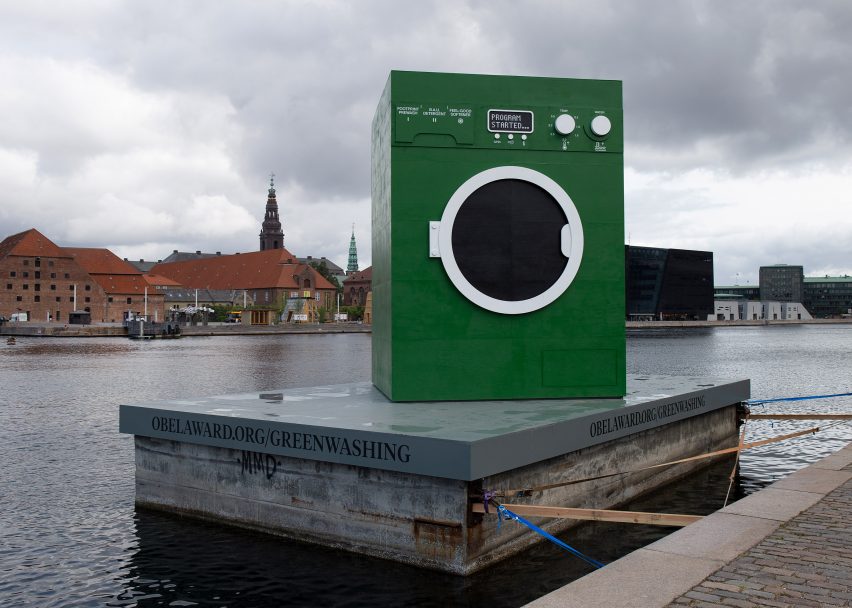
Obel Award: Unpavilion
Architects: MAST
Design partners: Obel Award, Das Boot Naval Engineers
Location: Ved Lille Langebro
The Obel Award, one of the world's richest architectural prizes, decided to use the UIA platform to make a statement about the problem of greenwashing in the construction industry.
To do this, it has created an installation in the form of a huge green washing machine.
This is positioned on a salvaged concrete barge, allowing it to be moved to different locations on the city's waterways.
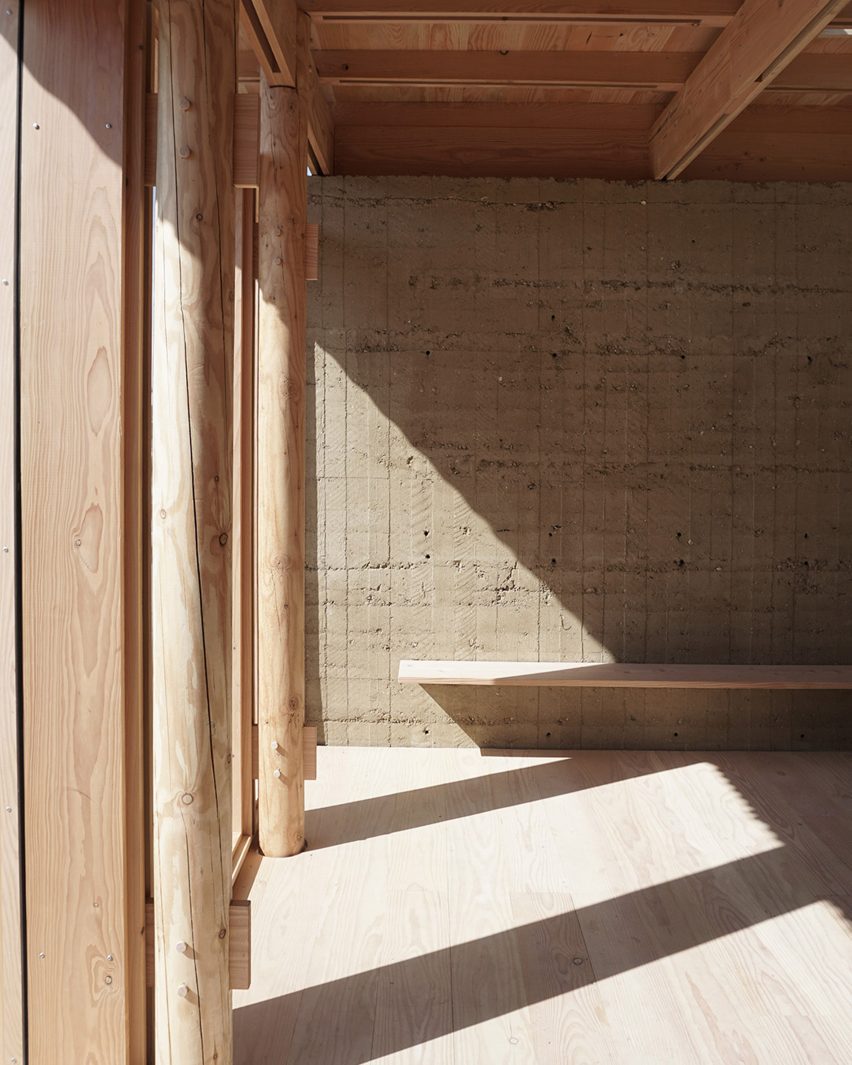
From 4 to 1 Planet: Natural Pavilion
Architects: ReVærk
Design partners: Smith Innovation
Location: Søren Kierkegaards Plads
From 4 to 1 Planet presents three pavilions created by winners of its Next Generation Architecture competition, which called for ideas into how housing construction could be climate-friendly.
The first, designed by ReVærk, focuses on alternative materials. The structure features rammed earth walls, made using locally sourced clay soil, combined with a timber structure and biogenic insulation cassettes made from wood fibre.
The design aims to show how these materials can enhance the sensory value of the home.
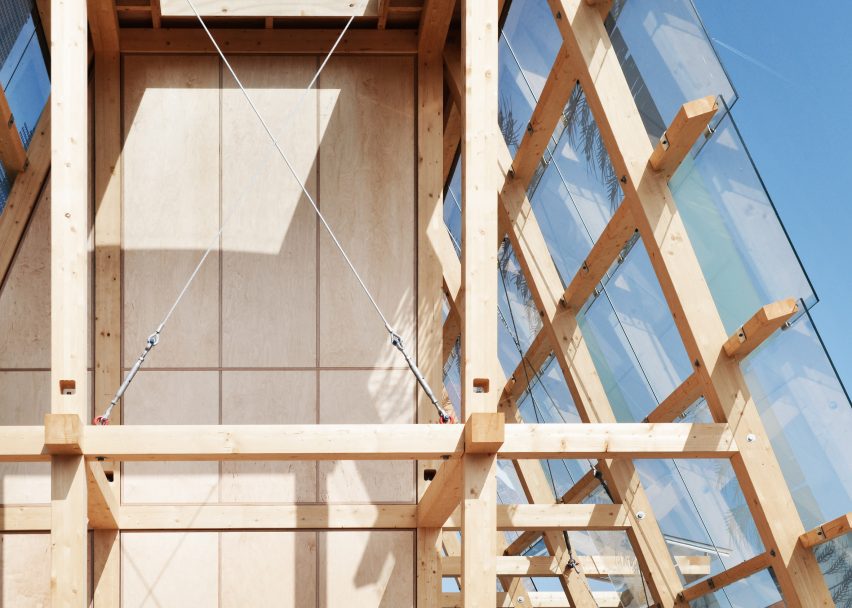
From 4 to 1 Planet: Quarter Pie Pavilion
Architects: Tegnestuen LOKAL
Design partners: Aaen Engineering, Smith Innovation
Location: Søren Kierkegaards Plads
For the second of the From 4 to 1 Planet pavilions, Tegnestuen LOKAL has designed a structure that highlights 10 key principles for reducing the carbon footprints of homes.
The Quarter Pie Pavilion offers an example of a mass housing concept that aims to combine alternative approaches to construction with new approaches to living.
The architects hope to show how future homes need to be more compact and flexible, while incorporating circular design.
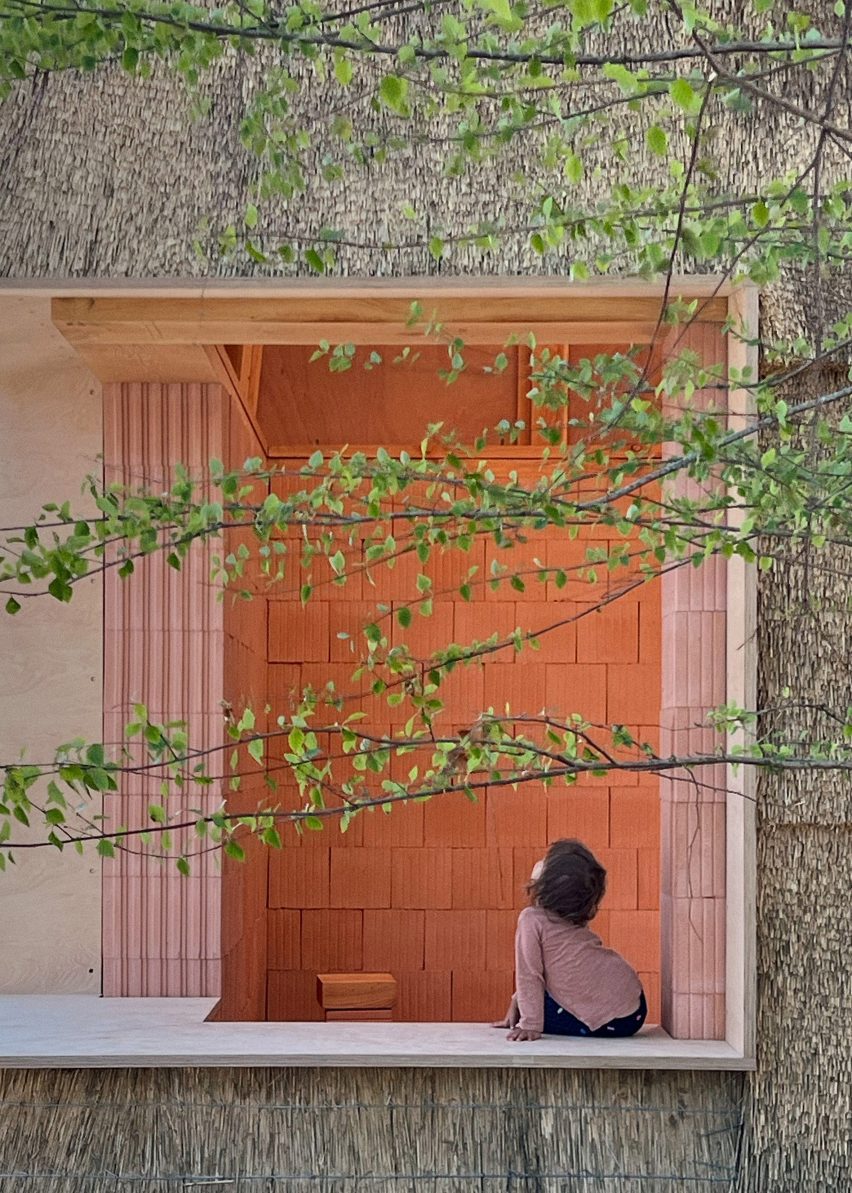
From 4 to 1 Planet: Thatched Brick Pavilion
Architects: Leth & Gori, Rønnow
Design partners: CINARK, Smith Innovation
Location: Søren Kierkegaards Plads
The third From 4 to 1 Planet pavilion is made up of two main components: a thatched exterior and roof made of straw and an interior formed of porous clay blocks.
The design – developed by architects Leth & Gori and Rønnow with CINARK, a research centre at the Royal Danish Academy – aims to show how combining these two biobased materials can create high levels of insulation and fire safety.
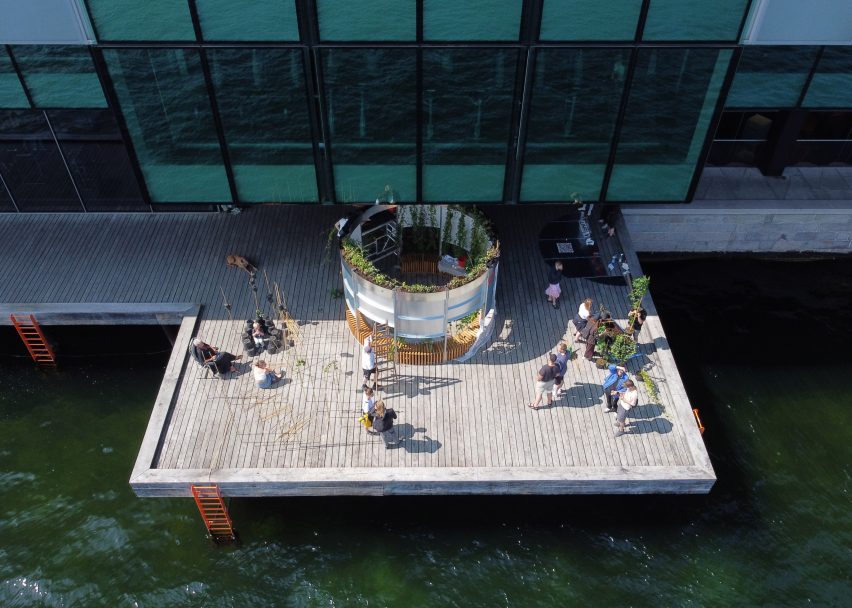
Bio-Center
Architects: Architects Without Borders
Design partners: National Slum Dwellers Federation of Uganda, ACTogether Uganda
Location: Ved Lille Langebro
The Danish arm of non-profit organisation Architects Without Borders presents a version of a sanitation project it has already built in Uganda and plans to install in other locations across Sub-Saharan Africa.
With millions in this region living in slums, the project explores how a simple and scaleable architectural structure can provide toilets, showers and access to clean water, as well as facilities for cooking and socialising.
Utilising a method developed by UN-Habitat, it turns faeces into biogas, providing a more eco-friendly fuel for cooking than the more commonly used charcoal.
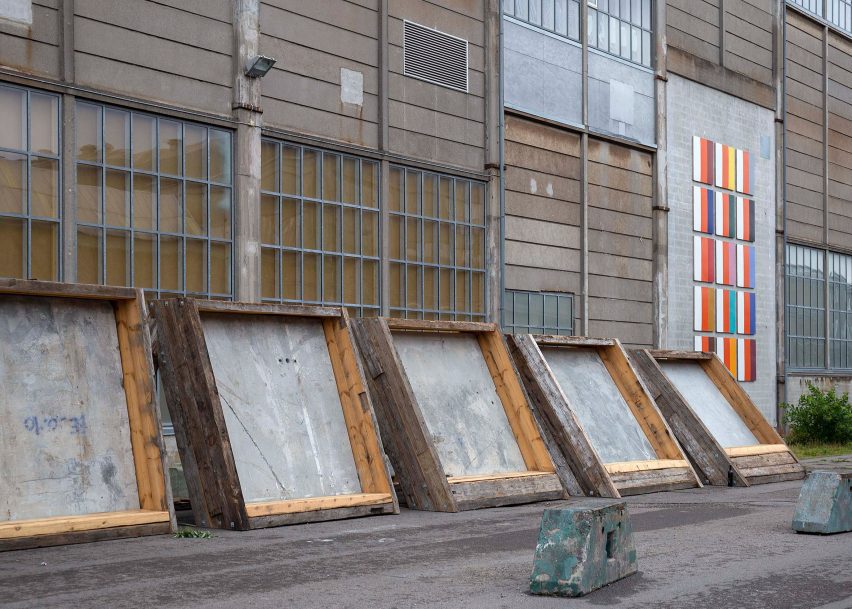
(P)recast
Architects: GXN
Design partners: Teknologisk Institut, Aarhus Universitet
Location: Refshalevej 173
This project is a result of ongoing research by GXN, the innovation arm of Danish architecture firm 3XN, into how precast concrete elements can be reused to create load-bearing structures.
A common component in buildings from the 1950s onwards, the slabs are highly carbon-intensive to produce and offer a long lifespan. So if a building is demolished too soon, it results in a huge environmental impact.
This SDG Pavilion is built from concrete slabs sourced from demolition projects around Copenhagen, set into frames made from salvaged wood that is more than 150 years old.
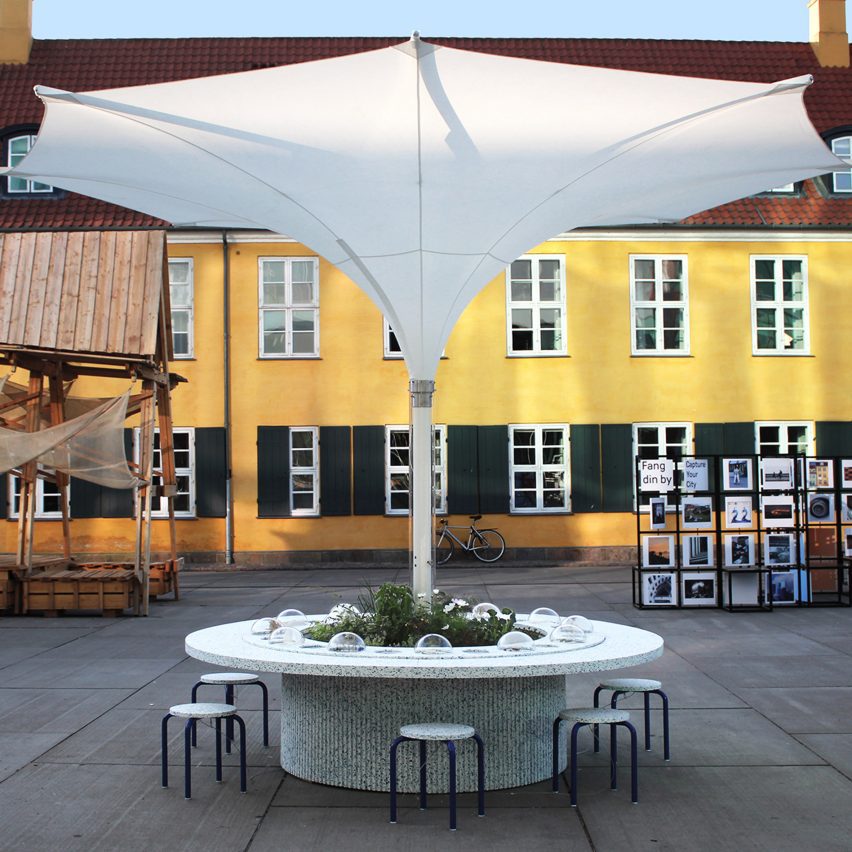
Feed-Back
Architects: Schmidt Hammer Lassen
Design partners: BLOXHub, Roskilde Festival
Location: Bryghusgade 10
This installation at the entrance to BLOX is part of an ongoing project by architecture firm Schmidt Hammer Lassen exploring how shared meals and other food-related activities can help to build multi-generational communities.
Here, it takes the form of a circular table made out of post-consumer plastic, topped by an umbrella-like canopy, and filled with edible flowers, herbs and vegetables.
Described as a "community activation device", the table hosted events during UIA. Next, it will travel to nearby Roskilde to be presented at music festivals.
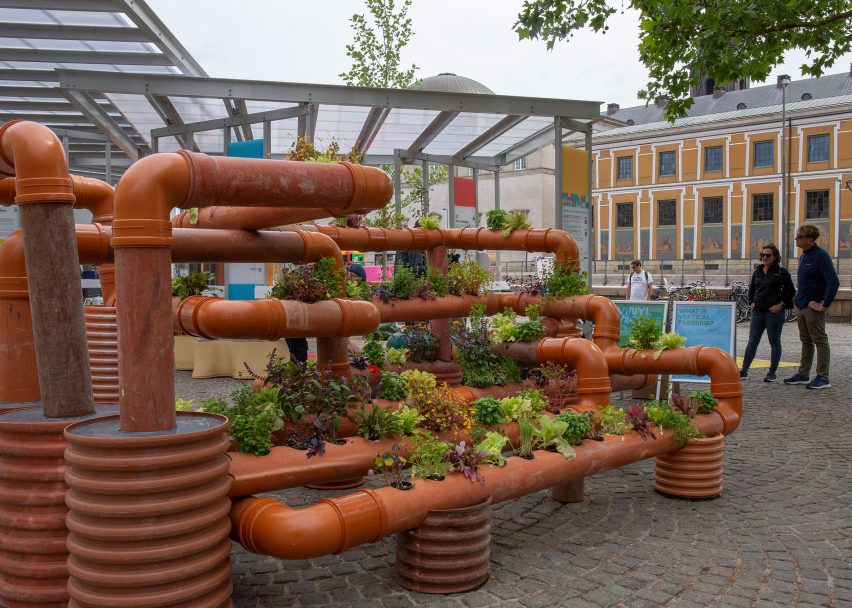
Plastic Pavilion
Architects: Terroir
Design partners: The Danish Plastics Federation, Nordiq Group
Under the theme Building Sustainable Societies, this SDG Pavilion explores how plastic can be utilised without negative implications for the planet.
Designed by architects Terroir, the dismantable structure is framed by I-beams that are made from recycled plastic rather than steel, which sit on 3D-printed "feet" weighed down by stones.
Inside is an exhibition showcasing innovative uses of plastic in healthcare, construction, and water, electricity and heating systems. The showpiece is a structure made from recycled pipes, which offer growing spaces for plant life.
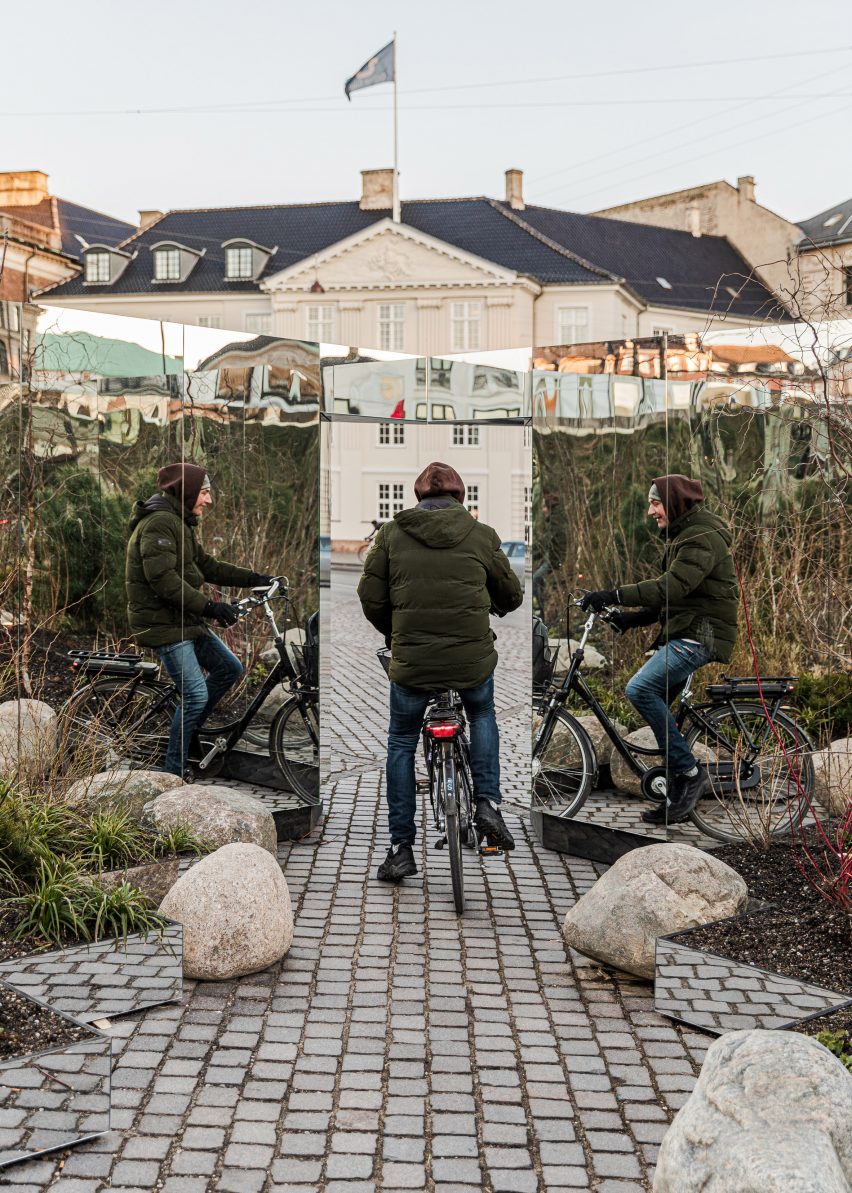
Reflections in Common
Design: Municipality of Copenhagen, Urgent Agency
Location: Kongens Nytorv
Copenhagen's city architect Camilla Van Deurs spearheaded the design of this "mirror cabinet" in Copenhagen's central plaza, Kongens Nytorv.
Combining mirrored panels with plants, it offers passersby a moment of reflection.
The design serves as an example of circularity, with all components set to be recycled when the pavilion is dismantled at the end of the year. The plants will meanwhile find permanent homes in other locations around the city.
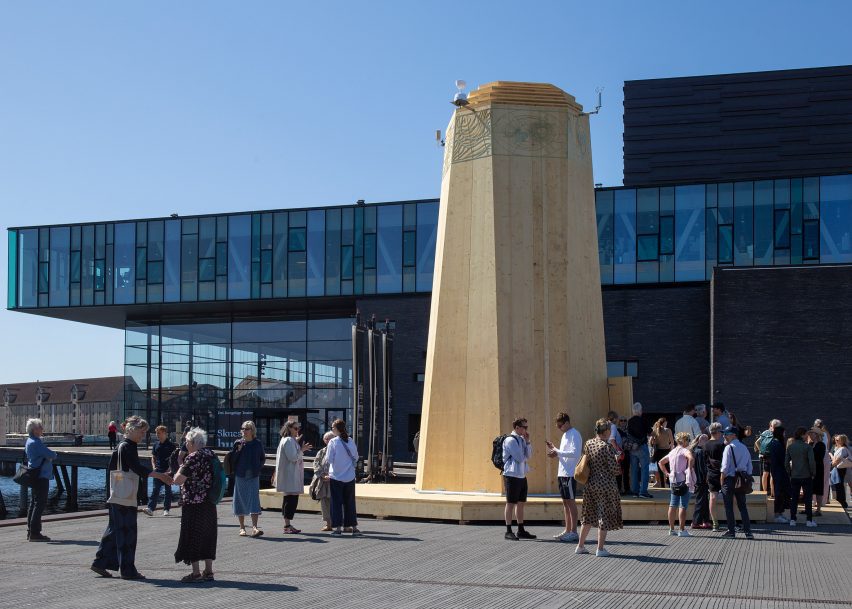
Tower of Wind
Architects: Atenastudio, Henning Frederiksen, Christian Fogh, Simone Aaberg Kærn
Design partners: DMI, CLT Danmark, Standard System Engineering
Location: Kvæsthusbroen
Taking cues from the Tower of Wind in Athens, Greece, said to be the world's first meteorological observation station, this mini tower offers a place for learning about the climate.
Built from CLT, the octagonal structure presents a series of instruments that measure the movements of the sun, wind and water.
By taking visitors on a journey through the history of meteorology, it aims to offer insight into how future technology might be used to overcome climate challenges.
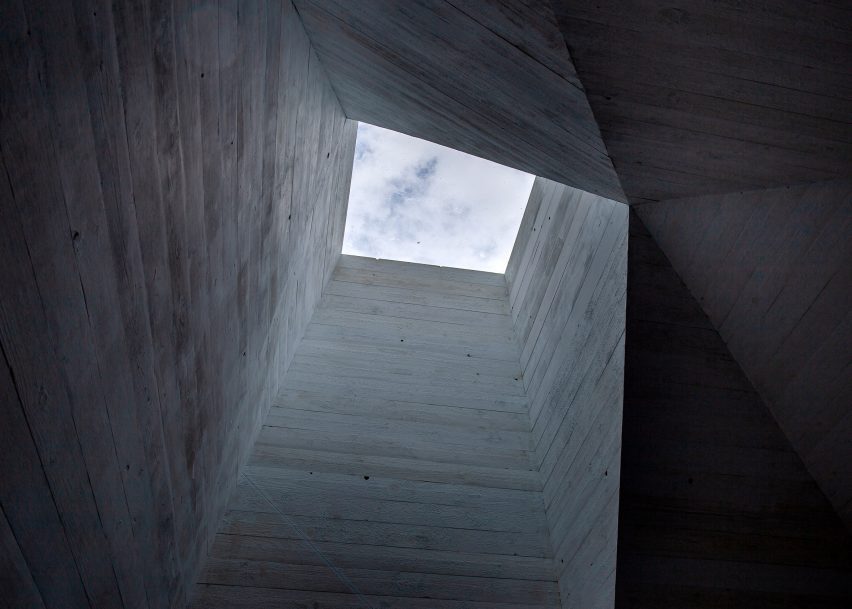
Poetic Daylight
Architects: Royal Danish Academy, Claus Pryds Architects
Design partners: AAU Build, Holst Engineering, Aaen Engineering
Location: Gråbrødretorv
A team from the Royal Danish Academy's Institute of Architecture and Design created this SDG Pavilion to highlight the importance of natural daylight in enhancing architectural spaces and supporting wellbeing.
With daylight extremely scarce in the Nordic region during the winter months, the pavilion shows how to make the most of the sun's rays rather than relying on artificial lighting.
The wooden structure features three spaces that exploit daylight in different ways.